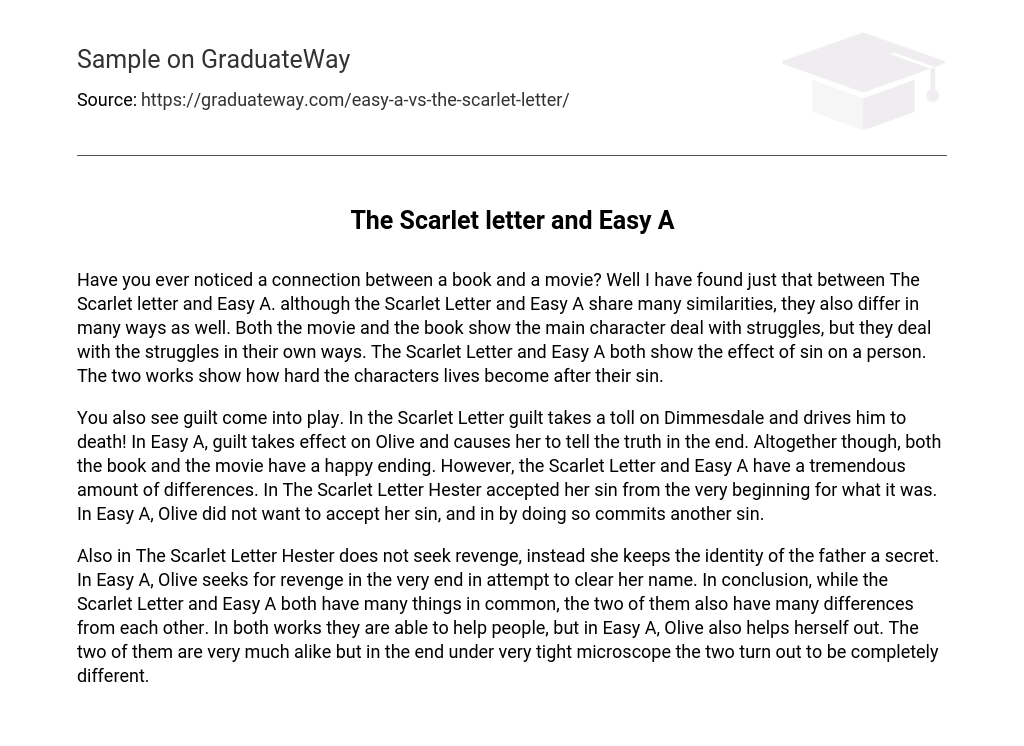In examining the correlation between a book and a movie, I have found it in The Scarlet Letter and Easy A. Although both works share many similarities, they also differ in several ways. Both the film and the novel depict the main character facing obstacles, but each handles them distinctively. The Scarlet Letter and Easy A portray the consequences of sin on a person’s life, highlighting the ensuing hardships.
Both The Scarlet Letter and Easy A delve into the theme of guilt. While guilt ultimately leads Dimmesdale to his demise in The Scarlet Letter, Olive in Easy A is eventually driven by guilt to confess the truth. Despite following different paths, both the book and the film conclude with a happy ending. Nonetheless, there exist notable distinctions between them. In The Scarlet Letter, Hester embraces her sin from the start, whereas Olive initially resists acknowledging her wrongdoing in Easy A, which prompts her to commit yet another transgression.
In The Scarlet Letter, Hester maintains secrecy about the identity of the father and does not seek vengeance. On the other hand, in Easy A, Olive seeks revenge towards the end to clear her name. Ultimately, while these two works share similarities, they also have distinct differences. Both stories involve helping others, but Olive also helps herself in Easy A. While they may seem similar, upon closer examination, they are actually quite different.





